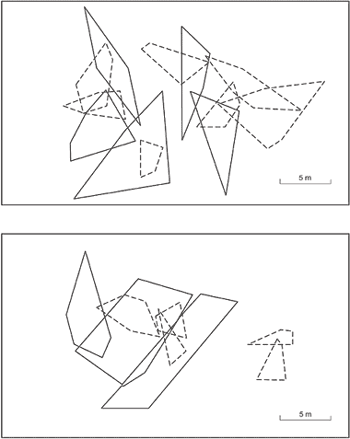The home range of the Tropidurid lizard Liolaemus lutzae, an endemic species of the costal sand dune habitats of Rio de Janeiro State, was studied in the beach habitat of Barra de Maricá restinga, Maricá County. Home ranges were studied using a mark-recapture technique in a delimited area at the beach habitat. I considered for estimates and analysis the home ranges of those lizards with a minimum of four positions. The size of L. lutzae home ranges varied according to the segment of the population. The mean home range size of adult males (x = 59.8 ± 33.7 m²) was significantly larger than that of adult females (x = 22.3 ± 16.1 m²). Juvenile mean home range size was significantly smaller than that of adult males, but did not differ from that of adult females (t = 1.058; p = 0.149). The overlap between male home ranges was usually low (3.6%), being in general only peripheral. Conversely, there was a considerable overlap between home ranges of adult females with those of adult males, the home range areas of two or three females being enclosed in the home range of one adult male. The small overlap between home ranges of adult males suggested mutual exclusion. The observed between-sex differences in the size of L. lutzae home range may be explained by the sexual dimorphism in body size in this species, and by the need of adult males to establish larger areas so as to include many females in their areas, during the reproductive season. The differences in home range along ontogeny probably result from differences in body size of the different segments of the population, due to trophic differences (carnivory and herbivory levels), and the dispersal of young after birth. Because L. lutzae is omnivorous, but primarily herbivorous when adult, and due to its sit-and-wait foraging behavior (mainly on arthropods), it does not need to move around over large areas to find food, which in turn reduces the area necessary for it to live.
home range; endemism; territory; lizard; restinga

